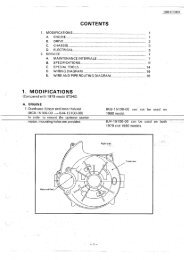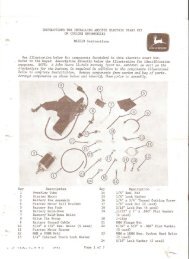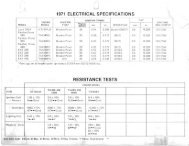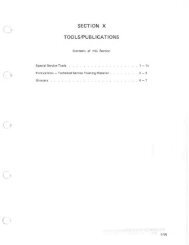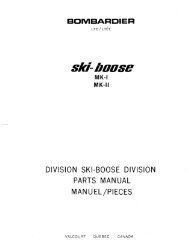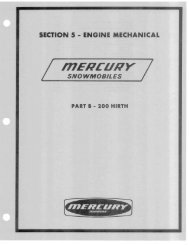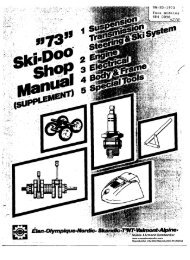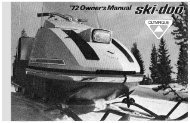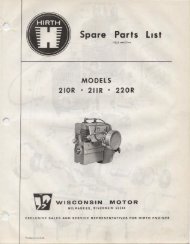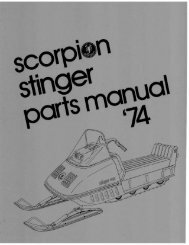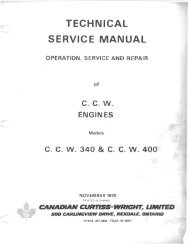You also want an ePaper? Increase the reach of your titles
YUMPU automatically turns print PDFs into web optimized ePapers that Google loves.
ENGINE ELECTRICALBattery Maintenance and TestingBattery Maintenance And TestingBattery maintenance is of the utmost importance toensure satisfactory EFI operation. Partially shortedbatteries can cause an additional load on the chargingsystem and in turn leave the EFI system with too littleto supply the relays, ECU, fuel pump, injectors, etc.When this type of machine enters your service area,be sure to thoroughly clean, inspect and test thebattery.cCAUTION: It is extremely important that the battery condition and state-of-charge be maintained at the highestlevel possible or serious performance and driveability problems will arise. Battery testing procedures are coveredbelow.Off season storage for snowmobiles, especially EFI equipped machines, requires the battery to be removed. Inthe summer months we find higher temperatures and higher levels of humidity. These conditions, along with asmall drain applied from the EFI system will in a very short time discharge the battery. Once the battery isdischarged, the plates will become sulfated (turn white), and the battery will no longer accept a charge. Batterieswhich are not disconnected, removed and kept charged will need to be replaced at the beginning of each season.Never substitute any battery of lesser quality when replacement is required. Batteries may bemaintained by using the Polaris Battery Tender PN 2871076.cBattery ServiceConventional battery service techniques apply to this battery. Maintain the specific gravity of the electrolyte tobetween 1.270 and 1.300. The open circuit voltage must be maintained to between 12.7 and 12.9 volts DC (atroom temperature), at lower temperatures lower values may be OK. Voltage readings should always be takenwith a fluke meter. The select monitor will place aload onthe battery and on Type I units the monitor will incorrectlyread the low volts (less than 10).Battery Charging System Testing1. Adjust digital meter to DC volts and check battery voltage. Remove the battery. Service and test as outlined earlierMust be 12.4 volts or more (no load). If the select monitor is in the <strong>engine</strong> <strong>electrical</strong> section. Before continuing, thebein9 used, the battery has been placed in a load and battery must be in good serviceable condition and fullyreadings will be approximately .2 volts lower. Also, the select charged. IMPORTANT: Replace battery if questionable.monitor on some models will not read accurate voltage below Yes - See Block 212.0 and therefore should not be used. Does DC voltageread correctly?No-+Yes ~2. Start <strong>engine</strong> and increase to at least 4000 RPM. Battery Check battery charging coil. Disconnect coil leads.voltage should increase to 13.6 to 14.6 volts. NOTE: If Reference specifications for ohms values andbattery is low on charge, the reading will be low. A fully connections. NOTE: These coils are open to ground,charged battery will reach the higher number more quickly. Is between any wire and ground should show open circuit.voltage reading correct?AC amperage testing will show approximately 7 amps atNo-+4000 to 6000 RPM. Are tests OK?Yes~ Yes - See Block 3No~3. Charging system is testing OK. Check for any possible Replace lighting coil and/or flywheel. Re-test system.loose connections between rectifier, regulator and battery. See Block 1.Are there any loose connections?No~4. Replace regulator rectifier and re-test system.4.37 8/94



